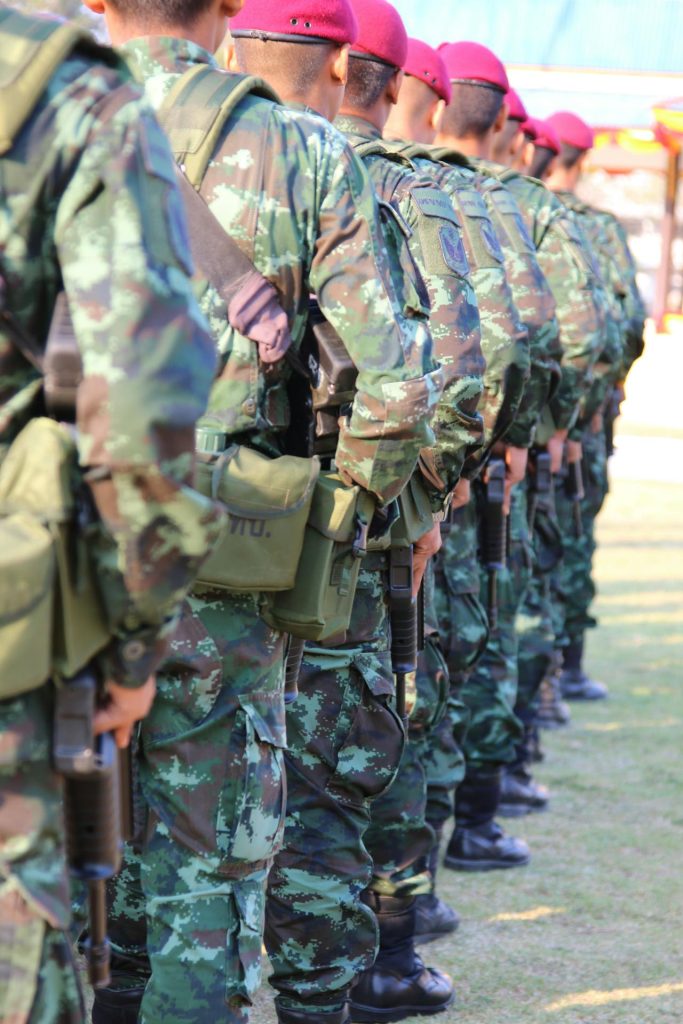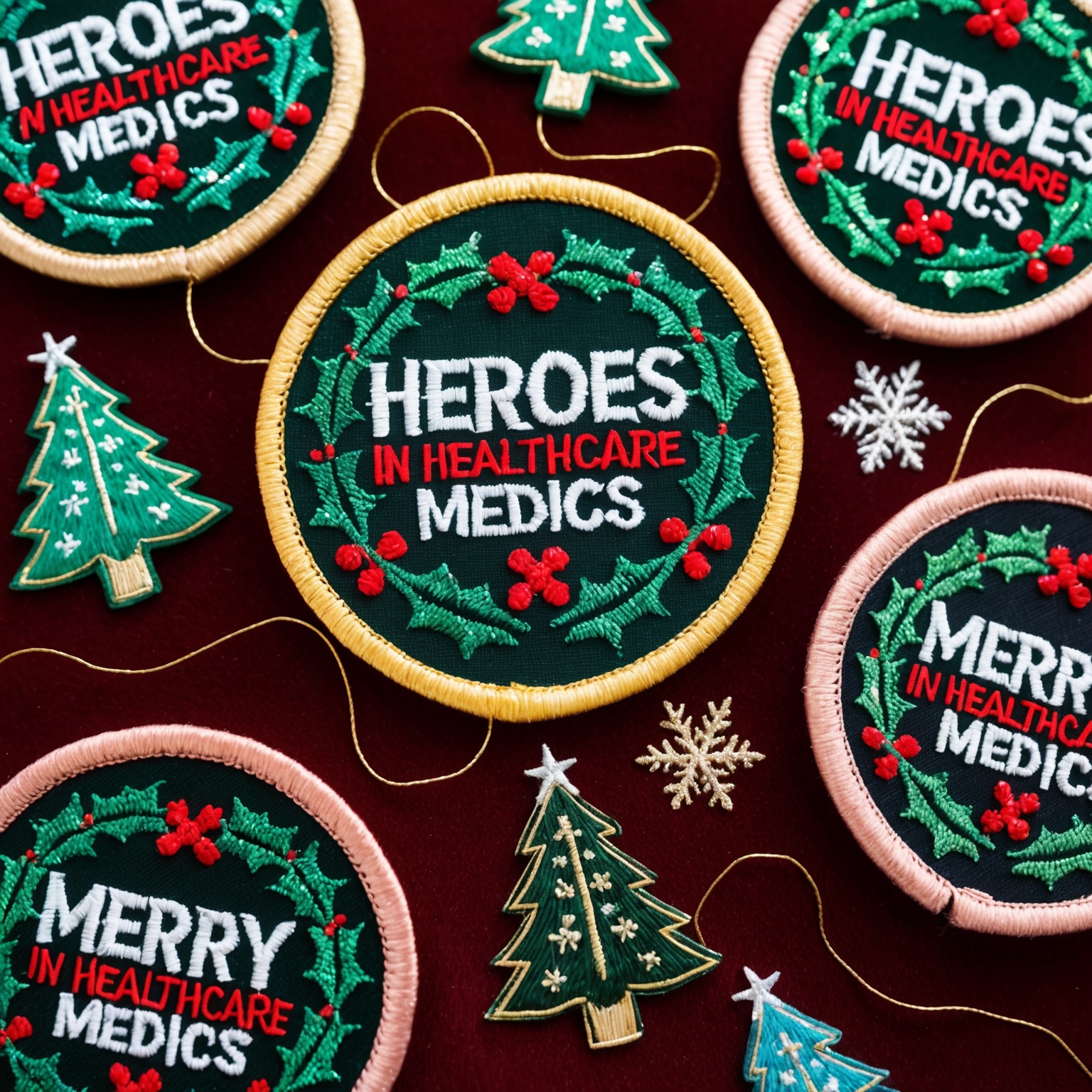Historical military patches are more than just pieces of embroidered fabric; they are rich symbols of heritage, pride, and identity. Originating from the need to distinguish military units on the battlefield, these patches have evolved into highly collectible artifacts that offer a unique glimpse into the past. Over the years, they have come to represent the stories, achievements, and sacrifices of countless soldiers. This article explores the legacy of historical military patches, tracing their journey from the battlefield to collectors’ displays, and highlighting their significance in military history and culture.
The Origins and Evolution of Military Patches
The history of military patches dates back centuries, evolving from practical insignia to symbols of unit pride and identity. Their development reflects changes in military organization, technology, and culture.
- Early Military Insignia: The use of symbols and insignia to identify military units can be traced back to ancient times. Roman legions, for example, carried standards and emblems that represented their units. However, the modern concept of military patches as fabric insignia began to take shape in the 19th and early 20th centuries.
- World War I and the Introduction of Patches: During World War I, the need for quick identification on the battlefield led to the widespread use of cloth patches. These patches helped distinguish different units and ranks, especially in the chaos of trench warfare. They were typically simple in design, often featuring basic symbols or numbers.
- World War II and the Proliferation of Unit Patches: World War II saw a significant expansion in the use and variety of military patches. As the war involved large numbers of troops and a wide range of specialized units, patches became a crucial means of identification and unit pride. Designs became more complex, often incorporating unique symbols, colors, and mascots that reflected the unit’s character and mission.
- Post-War and Modern Military Patches: In the post-war era, the tradition of military patches continued, with new designs emerging for peacekeeping missions, cold war deployments, and modern conflicts. The patches often commemorate specific operations, units, or events, serving as a record of military history and experiences.
The Significance of Historical Military Patches
Historical military patches are imbued with deep significance, serving as symbols of identity, honor, and memory. They represent not only the units they belong to but also the broader narratives of military history.
- Symbols of Unit Identity and Pride: For soldiers, military patches are a source of pride and identity. They signify membership in a specific unit and often reflect the unit’s unique characteristics, traditions, and history. The design elements, such as symbols, colors, and mottos, encapsulate the essence of the unit’s mission and values.
- Commemoration of Achievements and Sacrifices: Many historical military patches commemorate specific achievements, campaigns, or battles. They serve as a reminder of the accomplishments and sacrifices made by the unit and its members. For example, a patch from a unit involved in a significant battle might include symbols representing victory, bravery, or loss.
- Historical Documentation: Patches are valuable historical documents, providing insights into the evolution of military organization, tactics, and technology. They reflect changes in uniforms, equipment, and the structure of military forces. Collectors and historians often use patches to trace the lineage and deployment history of units.
- Cultural and Symbolic Significance: Beyond their military context, historical patches hold cultural and symbolic significance. They often include elements that resonate with broader societal values, such as patriotism, freedom, and resilience. Patches from different countries and periods offer a window into the cultural and historical context of the times.
Notable Historical Military Patches and Their Stories
Certain historical military patches have become iconic, representing pivotal moments in military history and the units that participated in them. Here are a few notable examples:
- The Big Red One (1st Infantry Division): One of the most famous patches in U.S. military history, the “Big Red One” patch features a large red numeral “1” on a green background. This patch represents the 1st Infantry Division, one of the oldest and most distinguished divisions in the U.S. Army. The division played a significant role in both World Wars, and the patch symbolizes its storied history and contributions.
- The Screaming Eagles (101st Airborne Division): The “Screaming Eagles” patch, depicting a bald eagle’s head, represents the 101st Airborne Division. Known for their role in major operations such as D-Day and the Battle of the Bulge, the division’s patch has become synonymous with airborne and airmobile operations. The eagle symbolizes strength and vigilance, key attributes of the division.
- The Flying Tigers (AVG): The Flying Tigers were a group of American volunteer pilots who fought in China during World War II before the United States officially entered the war. Their iconic patch features a tiger flying through a “V for Victory” symbol. The patch commemorates their daring missions and the unique, unofficial nature of their service.
- The Red Devils (1st British Airborne Division): The “Red Devils” patch, featuring a winged devil, represents the 1st British Airborne Division. This unit was involved in significant airborne operations during World War II, including the ill-fated Battle of Arnhem. The patch symbolizes the daring and elite nature of airborne troops.
- The Desert Rats (7th Armoured Division): The “Desert Rats” patch, depicting a jerboa (a small desert rodent), represents the British 7th Armoured Division. This division was instrumental in the North African campaign during World War II. The patch symbolizes the division’s resilience and adaptability in desert warfare.
The Art and Design of Military Patches
The design of military patches is a specialized art form that combines symbolism, aesthetics, and practicality. Several key elements contribute to the creation of an effective and meaningful patch.
- Symbolism and Imagery: The choice of symbols and imagery is crucial in conveying the patch’s meaning. Symbols such as animals, weapons, and national icons are often used to represent the unit’s characteristics or mission. For example, an eagle might symbolize air superiority, while a sword could represent combat readiness.
- Color and Material: Colors are carefully selected for their symbolic meanings and visual impact. For example, red may symbolize courage, blue may represent loyalty, and green may indicate a connection to nature or the land. The materials used in the patch, such as thread and backing, affect its durability and appearance.
- Shape and Size: The shape and size of a patch are also important considerations. While many patches are traditionally round, square, or shield-shaped, custom shapes are sometimes used to better represent the unit’s identity. The size of the patch should be appropriate for its placement on uniforms or equipment.
- Mottos and Text: Mottos, slogans, and other text elements often appear on military patches. These phrases encapsulate the unit’s ethos, mission, or achievements. For example, the U.S. Marine Corps patch often includes the motto “Semper Fidelis” (Always Faithful).
- Embroidering Techniques: Advanced embroidering techniques allow for detailed and intricate designs. Techniques such as 3D puff embroidery, metallic threads, and glow-in-the-dark elements can enhance the visual appeal and functionality of the patch.
The Journey from Battlefield to Collector’s Display
Historical military patches have made a significant journey from their origins as practical identifiers on the battlefield to prized collectibles and historical artifacts.
- Transition to Collectibles: As military patches began to accumulate historical significance, they transitioned from practical items to collectibles. Veterans often kept their patches as mementos of their service, and over time, these items became sought after by collectors and historians.
- Collecting and Preserving Patches: Collecting military patches is a popular hobby among military enthusiasts and historians. Collectors often seek out rare or historically significant patches, which can vary in value based on factors such as age, rarity, and condition. Preserving these patches involves careful handling, storage, and display to prevent damage and deterioration.
- Exhibitions and Displays: Historical military patches are frequently featured in exhibitions and displays at museums, military bases, and historical societies. These displays provide educational value, offering visitors a tangible connection to military history and the stories behind the patches.
- Reproductions and Replicas: Due to their popularity, reproductions and replicas of historical military patches are often produced. While these items can provide an affordable way for enthusiasts to own a piece of history, distinguishing between original and reproduction patches is important for collectors.
The Impact of Historical Military Patches on Military Culture
Historical military patches have had a lasting impact on military culture, influencing everything from unit cohesion to public perception.
- Unit Cohesion and Morale: Patches contribute to unit cohesion and morale by fostering a sense of identity and pride. They serve as visible symbols of a unit’s shared experiences and achievements, helping to build camaraderie among members.
- Commemoration and Remembrance: Military patches play a role in commemorating and remembering the contributions and sacrifices of soldiers. They often serve as a form of remembrance for veterans and their families, honoring the legacy of those who served.
- Public Perception and Outreach: The display and recognition of military patches contribute to the public’s understanding and appreciation of the military. They help communicate the values, achievements, and sacrifices of military personnel, fostering a greater connection between the armed forces and the public.
- Cultural and Historical Education: As artifacts of military history, patches provide valuable insights into the cultural and historical context of different eras. They offer a unique perspective on the evolution of military units, technology, and tactics.
Conclusion
The legacy of historical military patches is a testament to their enduring significance in military history and culture. From their origins on the battlefield to their status as prized collectibles, these patches encapsulate the stories, achievements, and sacrifices of countless soldiers. They serve as symbols of pride, identity, and memory, preserving the rich heritage of military units and their contributions to history. As we continue to study and appreciate these artifacts, historical military patches will remain a vital link to the past, honoring the legacy of those who served and the stories they left behind.
If you are interested in purchasing high-quality custom patches, feel free to call us at 1-866-903-4903 or fill out one of our FREE quotes here.




